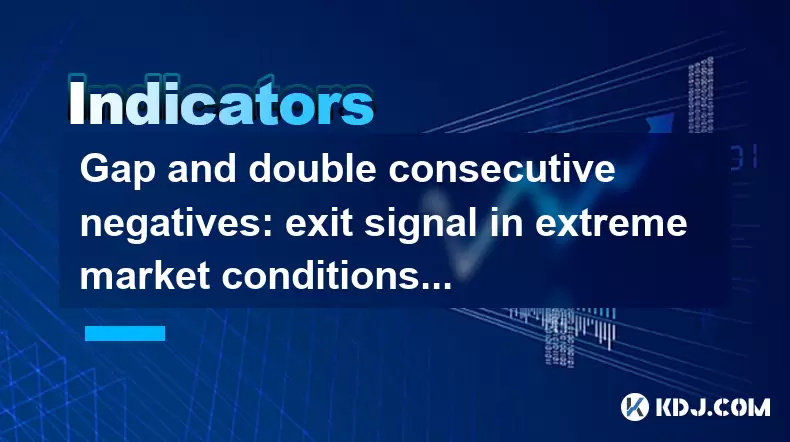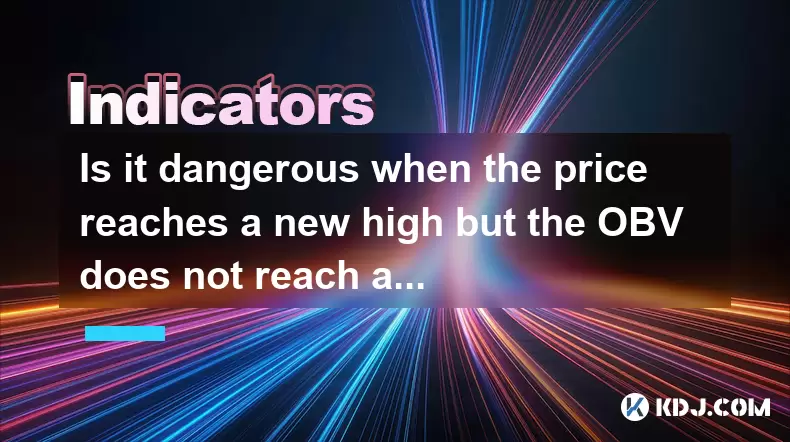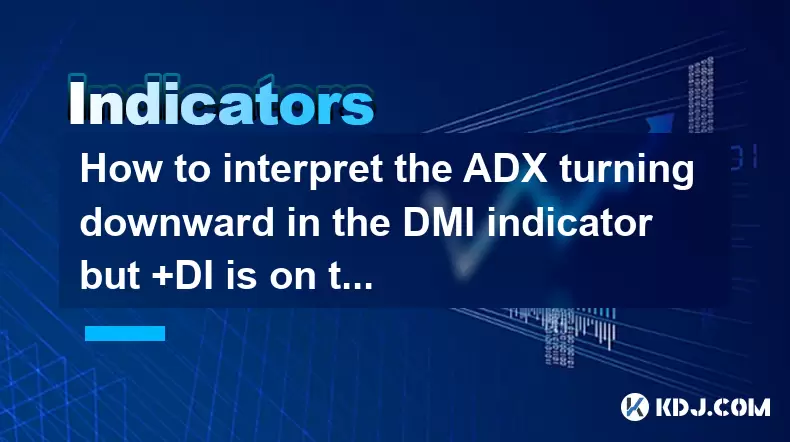-
 Bitcoin
Bitcoin $106,754.6083
1.33% -
 Ethereum
Ethereum $2,625.8249
3.80% -
 Tether USDt
Tether USDt $1.0001
-0.03% -
 XRP
XRP $2.1891
1.67% -
 BNB
BNB $654.5220
0.66% -
 Solana
Solana $156.9428
7.28% -
 USDC
USDC $0.9998
0.00% -
 Dogecoin
Dogecoin $0.1780
1.14% -
 TRON
TRON $0.2706
-0.16% -
 Cardano
Cardano $0.6470
2.77% -
 Hyperliquid
Hyperliquid $44.6467
10.24% -
 Sui
Sui $3.1128
3.86% -
 Bitcoin Cash
Bitcoin Cash $455.7646
3.00% -
 Chainlink
Chainlink $13.6858
4.08% -
 UNUS SED LEO
UNUS SED LEO $9.2682
0.21% -
 Avalanche
Avalanche $19.7433
3.79% -
 Stellar
Stellar $0.2616
1.64% -
 Toncoin
Toncoin $3.0222
2.19% -
 Shiba Inu
Shiba Inu $0.0...01220
1.49% -
 Hedera
Hedera $0.1580
2.75% -
 Litecoin
Litecoin $87.4964
2.29% -
 Polkadot
Polkadot $3.8958
3.05% -
 Ethena USDe
Ethena USDe $1.0000
-0.04% -
 Monero
Monero $317.2263
0.26% -
 Bitget Token
Bitget Token $4.5985
1.68% -
 Dai
Dai $0.9999
0.00% -
 Pepe
Pepe $0.0...01140
2.44% -
 Uniswap
Uniswap $7.6065
5.29% -
 Pi
Pi $0.6042
-2.00% -
 Aave
Aave $289.6343
6.02%
Gap and double consecutive negatives: exit signal in extreme market conditions?
The gap and double consecutive negatives pattern signals potential price reversals in crypto, especially after sharp moves and heightened volatility.
Jun 16, 2025 at 06:22 pm

Understanding Gap and Double Consecutive Negatives
In the cryptocurrency market, technical analysis plays a crucial role in identifying potential trends and reversal signals. One such pattern that traders often observe is the gap and double consecutive negatives formation. This pattern typically appears during periods of heightened volatility and can serve as a strong indicator of an impending price reversal, especially when observed in extreme market conditions.
A gap occurs when the price of a cryptocurrency opens significantly higher or lower than its previous closing price, with no trading activity occurring between these two points. When this gap is followed by two consecutive negative candles, it suggests a shift in market sentiment from bullish to bearish (or vice versa in inverse scenarios). These two red candles indicate that sellers have taken control after a strong upward move, potentially signaling exhaustion in buying pressure.
Identifying the Pattern on Price Charts
To effectively spot the gap and double consecutive negatives pattern, traders must analyze candlestick charts across various timeframes. Here's how to identify it step-by-step:
- Look for a clear price gap upwards on the chart — this can be seen when the opening price of the current candle is significantly higher than the closing price of the previous candle.
- Observe the next two candles following the gap. Both should close lower than their respective opening prices, forming two consecutive bearish candles.
- Ensure that the volume during the formation of these two candles is relatively high, which reinforces the strength of the selling pressure.
This pattern becomes more significant when it appears at key resistance levels or after a prolonged uptrend. In such cases, the double consecutive negatives may act as a confirmation signal that the market is losing momentum and could soon reverse direction.
Why It Matters in Extreme Market Conditions
Extreme market conditions are usually characterized by sharp price movements driven by fear, panic, or euphoria. During such times, the gap and double consecutive negatives pattern carries more weight because it reflects a sudden change in trader psychology.
For example, during a rapid price surge fueled by retail FOMO (fear of missing out), a gap up might occur due to excessive buying pressure. However, if this is immediately followed by two strong red candles, it suggests that institutional players or large whales are taking profits, causing the price to drop quickly.
This kind of reversal is particularly powerful in crypto markets, where liquidity can dry up rapidly in volatile conditions. Traders who recognize this exit signal early can avoid being caught on the wrong side of a trade and even position themselves for a potential shorting opportunity.
How to Use This Signal in Trading Strategy
Incorporating the gap and double consecutive negatives into your trading strategy requires careful planning and risk management. Here's a breakdown of how to approach it:
- Monitor high-volume assets like BTC, ETH, or altcoins experiencing sudden surges.
- Use tools like TradingView or Binance’s native charting platform to detect gaps and confirm the presence of two bearish candles.
- Wait for the second red candle to close before considering an entry point.
- Place a sell or short order just below the low of the second bearish candle.
- Set a stop-loss slightly above the high of the gap candle to limit downside risk.
- Consider exiting the trade once the price reaches a known support level or shows signs of consolidation.
It's essential to combine this pattern with other indicators like volume, RSI divergence, or moving averages to increase the probability of success. Relying solely on candlestick patterns without confirmation can lead to false signals, especially in the noisy environment of crypto trading.
Real-World Examples in Crypto Markets
Historically, the gap and double consecutive negatives pattern has appeared during several notable market events. For instance, during the May 2021 Bitcoin crash, BTC experienced a sharp rally to nearly $65,000, followed by a massive gap down and two strong bearish candles. Those who recognized the pattern had a chance to exit long positions or initiate short trades before the price plummeted further.
Another example occurred with ETH in early 2022, when a brief bull run was followed by a gap up and two red candles, marking the beginning of a prolonged downtrend. Traders who used this as an exit signal were able to preserve capital ahead of a broader market correction.
These examples illustrate how effective this pattern can be when applied correctly and within the right context. However, it's important to remember that no single signal works every time, and traders should always consider the broader market structure and macroeconomic factors before making decisions.
Frequently Asked Questions
Q: Is the gap and double consecutive negatives pattern reliable in all cryptocurrencies?
A: While this pattern can appear in any cryptocurrency, it tends to be more reliable in highly liquid assets like Bitcoin and Ethereum. Low-cap altcoins may produce false signals due to thin order books and erratic price action.
Q: Can this pattern also indicate bullish reversals?
A: Yes, in certain scenarios, a downward gap followed by two bullish candles can signal a potential reversal from a downtrend. However, these occurrences are less common and require additional confirmation from volume and other technical indicators.
Q: How does this differ from a shooting star or hanging man candlestick pattern?
A: The shooting star and hanging man are single-candle reversal patterns, while the gap and double consecutive negatives involve multiple candles and a preceding gap. The latter provides a more extended timeframe for confirming a reversal.
Q: Should I use this signal exclusively or combine it with other strategies?
A: For best results, this pattern should be part of a multi-indicator strategy. Combining it with volume analysis, trendlines, or momentum oscillators like RSI or MACD increases accuracy and reduces the risk of false signals.
Disclaimer:info@kdj.com
The information provided is not trading advice. kdj.com does not assume any responsibility for any investments made based on the information provided in this article. Cryptocurrencies are highly volatile and it is highly recommended that you invest with caution after thorough research!
If you believe that the content used on this website infringes your copyright, please contact us immediately (info@kdj.com) and we will delete it promptly.
- 2025-W Uncirculated American Gold Eagle and Dr. Vera Rubin Quarter Mark New Products
- 2025-06-13 06:25:13
- Ruvi AI (RVU) Leverages Blockchain and Artificial Intelligence to Disrupt Marketing, Entertainment, and Finance
- 2025-06-13 07:05:12
- H100 Group AB Raises 101 Million SEK (Approximately $10.6 Million) to Bolster Bitcoin Reserves
- 2025-06-13 06:25:13
- Galaxy Digital CEO Mike Novogratz Says Bitcoin Will Replace Gold and Go to $1,000,000
- 2025-06-13 06:45:13
- Trust Wallet Token (TWT) Price Drops 5.7% as RWA Integration Plans Ignite Excitement
- 2025-06-13 06:45:13
- Ethereum (ETH) Is in the Second Phase of a Three-Stage Market Cycle
- 2025-06-13 07:25:13
Related knowledge

How to interpret the low opening the next day after the long lower shadow hits the bottom?
Jun 18,2025 at 12:22am
Understanding the Long Lower Shadow Candlestick PatternIn technical analysis, a long lower shadow candlestick is often seen as a potential reversal signal in a downtrend. This pattern occurs when the price opens, trades significantly lower during the session, but then recovers to close near the opening price or slightly above. The long wick at the botto...

How to operate the RSI indicator repeatedly in the 40-60 range?
Jun 18,2025 at 12:56am
Understanding the RSI Indicator and Its RelevanceThe Relative Strength Index (RSI) is a momentum oscillator widely used in cryptocurrency trading to measure the speed and change of price movements. Typically, the RSI ranges from 0 to 100, with levels above 70 considered overbought and below 30 considered oversold. However, when the RSI repeatedly stays ...

Why is the volume ratio suddenly enlarged three times but the price fluctuation is small?
Jun 18,2025 at 04:42am
Understanding the Relationship Between Trading Volume and Price MovementIn the world of cryptocurrency trading, volume is a crucial metric that reflects the number of assets traded within a specific time frame. It often serves as an indicator of market interest and liquidity. However, there are instances where trading volume surges dramatically—sometime...

How strong is the MACD golden cross below the zero axis?
Jun 17,2025 at 11:00pm
Understanding the MACD Indicator in Cryptocurrency TradingThe Moving Average Convergence Divergence (MACD) is one of the most widely used technical indicators among cryptocurrency traders. It helps identify potential trend reversals, momentum shifts, and entry or exit points. The MACD consists of three main components: the MACD line, the signal line, an...

Is it dangerous when the price reaches a new high but the OBV does not reach a new high?
Jun 18,2025 at 06:14am
Understanding On-Balance Volume (OBV) in Cryptocurrency TradingIn the world of cryptocurrency trading, technical indicators play a crucial role in analyzing market behavior and predicting future price movements. One such widely used indicator is the On-Balance Volume (OBV), which helps traders assess the strength of buying or selling pressure behind pri...

How to interpret the ADX turning downward in the DMI indicator but +DI is on the top?
Jun 18,2025 at 08:01am
Understanding the Role of Decentralized Finance in Modern Cryptocurrency EcosystemsDecentralized Finance, commonly known as DeFi, has emerged as a cornerstone of the modern cryptocurrency ecosystem. Unlike traditional financial systems that rely on centralized intermediaries like banks and brokers, DeFi platforms operate on blockchain networks to offer ...

How to interpret the low opening the next day after the long lower shadow hits the bottom?
Jun 18,2025 at 12:22am
Understanding the Long Lower Shadow Candlestick PatternIn technical analysis, a long lower shadow candlestick is often seen as a potential reversal signal in a downtrend. This pattern occurs when the price opens, trades significantly lower during the session, but then recovers to close near the opening price or slightly above. The long wick at the botto...

How to operate the RSI indicator repeatedly in the 40-60 range?
Jun 18,2025 at 12:56am
Understanding the RSI Indicator and Its RelevanceThe Relative Strength Index (RSI) is a momentum oscillator widely used in cryptocurrency trading to measure the speed and change of price movements. Typically, the RSI ranges from 0 to 100, with levels above 70 considered overbought and below 30 considered oversold. However, when the RSI repeatedly stays ...

Why is the volume ratio suddenly enlarged three times but the price fluctuation is small?
Jun 18,2025 at 04:42am
Understanding the Relationship Between Trading Volume and Price MovementIn the world of cryptocurrency trading, volume is a crucial metric that reflects the number of assets traded within a specific time frame. It often serves as an indicator of market interest and liquidity. However, there are instances where trading volume surges dramatically—sometime...

How strong is the MACD golden cross below the zero axis?
Jun 17,2025 at 11:00pm
Understanding the MACD Indicator in Cryptocurrency TradingThe Moving Average Convergence Divergence (MACD) is one of the most widely used technical indicators among cryptocurrency traders. It helps identify potential trend reversals, momentum shifts, and entry or exit points. The MACD consists of three main components: the MACD line, the signal line, an...

Is it dangerous when the price reaches a new high but the OBV does not reach a new high?
Jun 18,2025 at 06:14am
Understanding On-Balance Volume (OBV) in Cryptocurrency TradingIn the world of cryptocurrency trading, technical indicators play a crucial role in analyzing market behavior and predicting future price movements. One such widely used indicator is the On-Balance Volume (OBV), which helps traders assess the strength of buying or selling pressure behind pri...

How to interpret the ADX turning downward in the DMI indicator but +DI is on the top?
Jun 18,2025 at 08:01am
Understanding the Role of Decentralized Finance in Modern Cryptocurrency EcosystemsDecentralized Finance, commonly known as DeFi, has emerged as a cornerstone of the modern cryptocurrency ecosystem. Unlike traditional financial systems that rely on centralized intermediaries like banks and brokers, DeFi platforms operate on blockchain networks to offer ...
See all articles

























































































